With an electric table, you can switch between sitting and standing positions, helping you reduce strain, improve blood circulation, and maintain proper posture. But simply owning a sit-stand desk isn’t enough. You need the right standing desk setup to unlock its full potential.
Let’s explore how to achieve maximum ergonomic benefits from your electric table and how to make small adjustments that can significantly enhance your office ergonomics and comfort.
Key Takeaways
-
A proper standing desk setup can help reduce strain, improve blood circulation, and enhance comfort.
-
Adjust your desk height and screen level to maintain a neutral position and good posture.
-
Keep essential items within arm’s length to prevent leaning forward and shoulder tension.
-
Alternate between sitting and standing positions for better well-being and productivity.
-
Complement your electric standing desk with an ergonomic chair and anti fatigue mat for maximum ergonomic benefits.
Health Benefits of Good Working Posture
Maintaining good posture is one of the most important parts of any office ergonomics strategy. A good working posture helps prevent muscle fatigue, eye strain, and long-term health risks associated with prolonged sitting or standing incorrectly.

Ideally, when working for prolonged periods, you should:
-
Keep your shoulders loose and relaxed,
-
Your elbows bent at about a 90-degree angle,
-
Your feet flat on the floor, and
-
Your neck shouldn't bend downwards. Have you noticed how your neck feels after using your phone for too long?
This is the ideal posture to observe while working. Luckily, the adjustability of electric tables can help us achieve this optimal posture:
On the other hand, poor posture can cause neck pain, shoulder tension, and stiffness. It can also affect your breathing and productivity over time. That’s why investing in the right office furniture, from an adjustable ergonomic chair to a height-adjustable desk, can have profound health benefits.
Together, these tools help you achieve a natural working position and proper posture alignment, reducing stress on your body even during extended work periods.
Setting Up an Electric Table for the Best Ergonomics Possible
The goal of an ideal standing desk setup is to make sure your workspace fits your body, not the other way around. Whether you’re using a height-adjustable desk, you want to find positions that keep you comfortable in both sitting and standing modes.
Follow these steps to fine-tune your standing desk setup for optimal posture, productivity, and comfort.
Step #1: Bring the Table Low Enough for the Keyboard to Rest on Your Hands

When using a keyboard and mouse, your elbows should bend naturally to about 90 degrees, with your shoulders relaxed. This position helps prevent arm strain, shoulder tension, and neck pain during long hours of work.
-
If your desk surface is too high, you’ll find yourself raising your shoulders slightly, a form of shoulder elevation, which can create unnecessary tension.
-
If your desk surface is too high, some people might compensate by placing their hands above their elbow level. This is not a relaxed position you'd want to be working long hours with.
-
If the desk surface is too low, you’ll start leaning forward, putting pressure on your lower back and disrupting your proper posture.
Here's how you can find the optimal desk height for your natural posture:
-
To find the optimal desk height, stand tall with your feet shoulder-width apart,
-
Place your arms at your sides, and bend your elbows to 90 degrees.
-
Adjust the height of your electric standing desk until the desk surface meets your forearms. This ensures you maintain a neutral position while typing, allowing your wrists and hands to rest comfortably.
For sitting positions, use an adjustable ergonomic chair with proper lumbar support and adjustable height. Your elbows should remain at a 90-degree angle, ideally resting on your chair's armrest, with your feet flat on the floor. The adjustment process is just as if you were standing: bring the table to a height where its surface meets your forearms.
This balanced setup allows you to work in comfort for extended periods without strain.
Step #2: Adjust the Height of Your Screen So That Its Top Edge Meets Your Eye Level

Another important part of standing desk ergonomics is monitor height. The top of your screen should be at or slightly below eye level. This keeps your head in a neutral neck position, preventing you from tilting up or leaning forward.
At this point, you wouldn't want to move the table since it's already at its optimal height. You'd want to move the monitor another way:
-
Use monitor arms or a monitor arm mount to easily adjust the screen height and distance. If you use two monitors, position them side by side with the primary screen directly in front of you to avoid twisting your neck.
-
If your monitor is on a stand, you may prop it up with reams of paper or books you no longer use.
-
If you're using a laptop, you may prop the device up using a laptop stand. But books and reams of paper work fine as well.
The screen should be about an arm’s length away from your eyes to minimise eye fatigue. Though this rule may vary, depending on the size of your screen. You may have a hard time focusing on the screen's contents if you're using a smaller screen.
At this point, you can already type with your elbows at a relaxed position, as well as look at your screen without straining your neck. But there's more you can do.
Step #3: Set a Height Profile for Sitting and Standing Desk Use

Switching between sitting and standing is the key to getting the most out of your sit stand desk. Prolonged sitting can lead to stiffness and health risks, while standing for prolonged periods can fatigue your leg muscles.
The solution is to find a rhythm that allows you to change positions regularly throughout the day.
Most height-adjustable desks and electric standing desks come with programmable height presets. You can save one for your ideal sitting position and another for your standing position. This way, you can move between them with a single button press.
-
In your standing position, follow the steps we've outlined in Step#1 to find the optimal desk height. Once you've found it, save it as a height preset on your electric table.
-
In your sitting position, follow the steps outlined in Step #1 to find the optimal desk height. Make sure your chair is adjusted so your feet are touching the floor. Once you've found the optimal desk height for your sitting position, save it as a height preset on your electric table.
-
After the two height presets are saved, you can easily switch between them. Tweak your electric table's settings so that at the push of a button, your desk goes to your saved "Standing" preset, and another button triggers the "Sitting" preset. This allows your desk to spontaneously adjust to your sitting and standing.
By alternating between sitting and standing, you’ll experience productivity benefits, improved blood circulation, and better focus throughout the day.
Set Up Your Electric Table for Optimal Ergonomics Today!
Your electric standing desk isn’t just another piece of office furniture. It’s an investment in your comfort, focus, and overall well-being. When set up correctly, it can significantly enhance your office ergonomics, allowing you to work comfortably for long hours without fatigue or discomfort.
If you’re incorporating standing desks into your office environment, don’t forget the small details that make a big difference: keep your shoulders relaxed, and ensure your desk height suits your neutral position, whether sitting or standing. Pair your height-adjustable desk with an ergonomic chair that offers lumbar support and ergonomic adjustment features for the best results.
You’ll notice the productivity benefits almost immediately: fewer aches, more energy, and better posture. Explore height-adjustable desks and other ergonomic accessories from Ergoworks Singapore today and experience what a well-optimised office desk setup can do for your comfort and health.
Frequently Asked Questions
How Often Should I Switch Between Sitting and Standing?
Try switching every 30 to 45 minutes. Regularly alternating between sitting and standing positions helps reduce strain and improve blood circulation.
What Are the Health Benefits of a Sit-Stand Desk?
A sit-stand desk promotes proper posture, increases energy levels, and reduces health risks associated with prolonged sitting.
Can I Use My Existing Chair with a Standing Desk?
You can, but pairing it with an ergonomic chair that has lumbar support provides better ergonomics when seated.
How Can I Prevent Discomfort When Standing?
Keep your feet shoulder-width apart, and avoid locking your knees. Make small shifts in weight to keep your leg muscles active. Most importantly, shift between sitting and standing to add movement to your routine and reduce prolonged strain.
Can Standing Desks Really Improve Productivity?
Yes. Studies have shown that standing desk setups can significantly enhance focus, alertness, and overall productivity during long hours of work.


![Falcon Chair [Free Footrest Worth $150]](http://ergoworks.com.sg/cdn/shop/files/Falcon_Chair_Main_Image.png?v=1757482801&width=104)

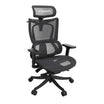


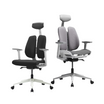

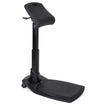

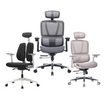
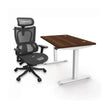

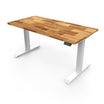
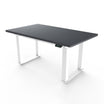
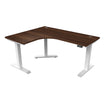
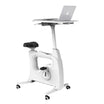

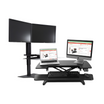

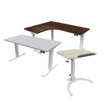





![Impact Ergonomic Kids Study Desk [Length Options Available]](http://ergoworks.com.sg/cdn/shop/files/KidDeskMainImageFinal.png?v=1764215536&width=104)
![Impact Ergonomic Kids Desk & Chair Set [FREE Spindle bookshelf & Eye Care Lamp Worth $318.90] [Chair & Length Options Available]](http://ergoworks.com.sg/cdn/shop/files/Kids_Desk_Nov_Promo_Square_Shopify.jpg?v=1761955288&width=104)




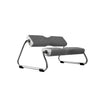
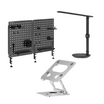









Leave a comment
This site is protected by hCaptcha and the hCaptcha Privacy Policy and Terms of Service apply.